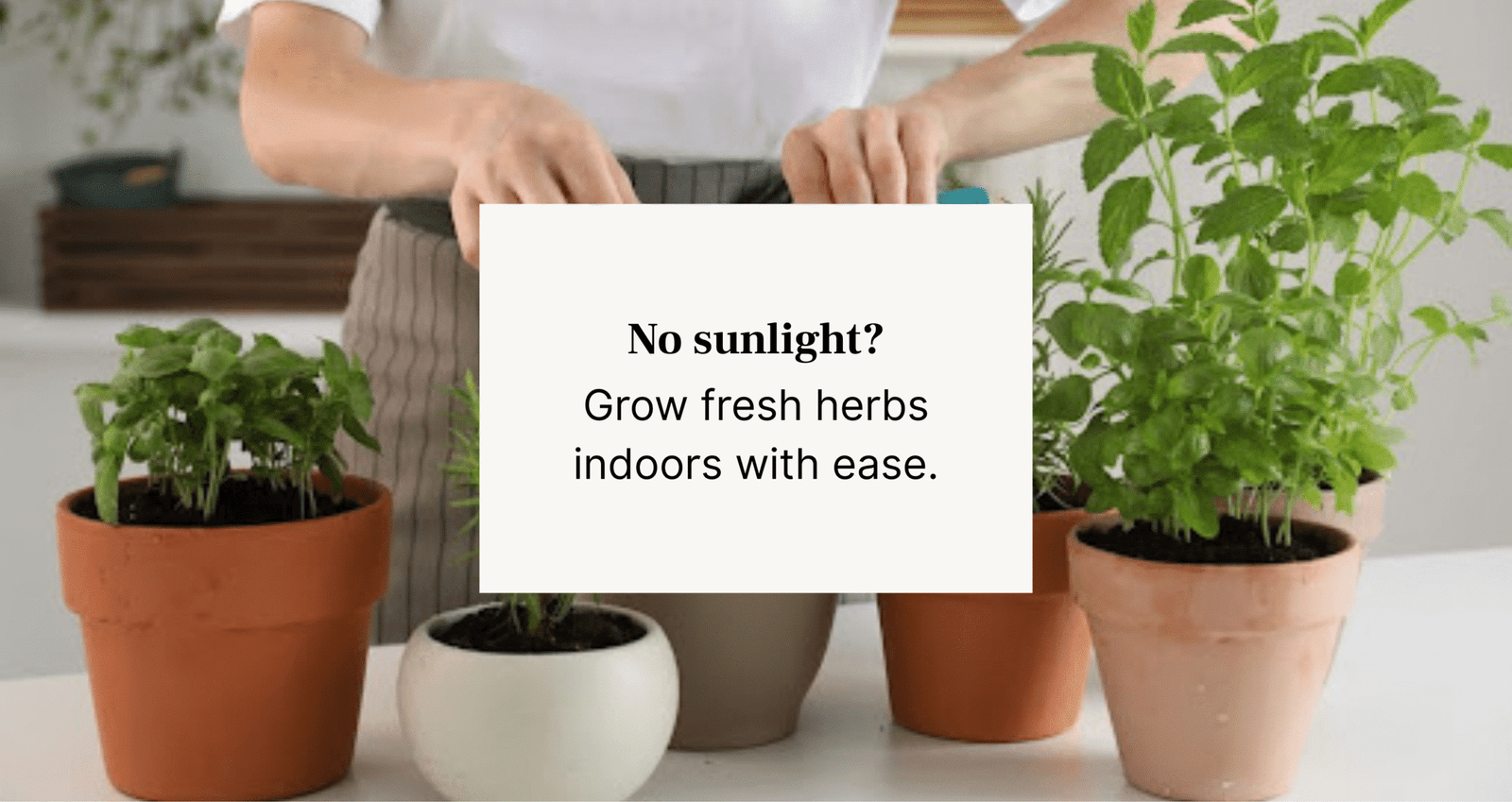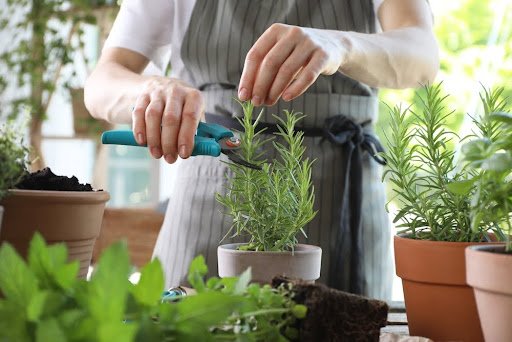Grow herbs indoors without sunlight using simple methods that work in low-light spaces.
Grow herbs indoors without sunlight using simple methods that work in low-light spaces.

Learn clever ways of indoor gardening and how to grow herbs indoor even in absence of sunlight.
The idea of having a healthy indoor herb garden but without direct sunlight might seem daunting, but it is definitely possible if the right practices will be implemented. Herbs help to season your food, to beautify your house and they increase the quality of the air you breathe as well. If you stay in an apartment or a house with minimum sunlight, you can also have all the herbs you want during all seasons by picking the right species and supplying alternative lighting and care options. This guide talks about ways of successfully growing herbs indoors in low light.
Also discover about 10 Juicy Summer Squash to Grow For Flavor & Easy Harvests

There are herbs that do not require full sun. Several of them do well in lower light settings, making them ideal for indoor areas that have a little natural light. Some of the popular low light herbs are:
Mint: Growing at a high rate and survives in indirect lights
Parsley: Prefers part shade to full sun condition and must be watered constantly to thrive.
Chives: Compact and would suit a window sill or a countertop.
Cilantro: Does well in cooler temperatures and is not fussy about strong sunlight.
Lemon balm: Aromatic and easy to grow indoors – inside your home.

Even when you do not have direct light, you can maximize on ambient light. Put your herbs below east- or north-facing windows that cause indirect, diffused lighting. For rooms that do not have any natural light, you may use grow lights. LED grow lights are efficient in nature and resemble the full light of the sun hence ideal for herbs.
Elevate position lights at 6-12 inches from your plants and leave them on for 12-16 hours in a day. Automate the lighting schedule using a timer. The light can also be bounced in the room by incorporating mirrors or the reflection surfaces which increases the exposure of your herbs.

The selection of the right containers is important if you have the urge to grow herbs indoors without sunlight. Herbs require good drainage and so choose pots with holes at the bottom and trays to retrieve excess water. Clay or ceramic pots are ideal for moisture control, however, plastic containers are light weighted and unlike other water covers they retain water for longer.
The quality of soil is very important for the herb health. A porous potting mix, which is specifically made for herbs or indoor plants, should be used.

Watering correctly is the most critical indoor gardening tips. Overwatering is usually the case, especially if the surroundings are poor in light thus slower evaporation rate. Put your finger in the soil, to an inch, and if it feels dry, it is time to water. Always water well, letting the excess run out.
For fertilization, one can use a balanced liquid fertilizer, half strength every 3–4 weeks. Do not over fertilize, as much as it can make the herbs grow very fast and lessen their flavor. Gentle and working – organic choices such as the use of compost tea or worm castings are suitable for indoor herbs.

Proper maintenance should ensure that your indoor herb garden is healthy. Trim you herbs regularly to promote bushier growth and to avoid leggings. Cut off any flowers that may develop as the flowering part will make the herbs bitter.
If your herb leaves looks pale or herbs grow very slowly then, it indicates that the herbs do not receive enough amount of light. See if you can change your grow light location or the length of time your grow light is on. Yellow, which means that you are overwatering your plant; dry tips might mean you do not have enough humidity – see if it helps to put a tiny humidifier or a water tray next to your plant.
There is no need to have a sunny windowsill in order to be able to enjoy fresh herbs all through the year. In even the smallest of rooms without direct light, you can grow herbs without sunlight at home with some careful planning and the right materials. Choosing the shade-tolerant herbs; training the use of artificial light and smart watering and maintenance strategy, your kitchen may transform into the herbal oasis of greenery. Indoor herb garden is not only a practical convenience but also equally organic for the new and the experienced growers.